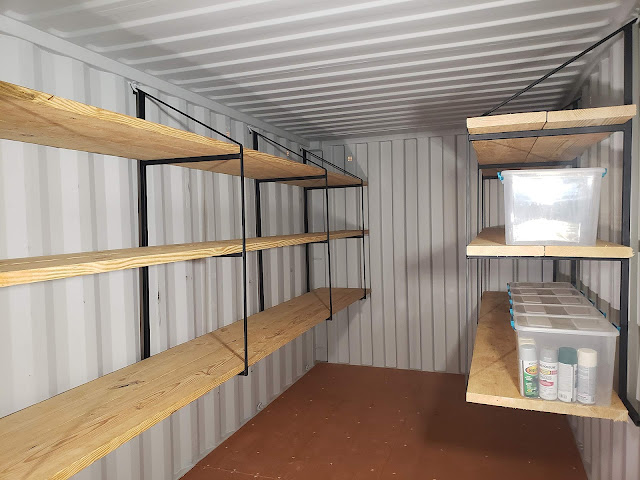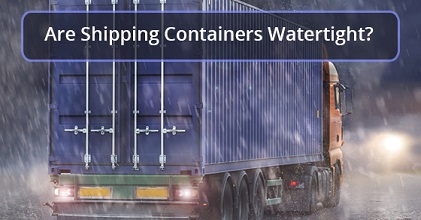Unlocking the Mobility of Cargo: 40-Foot Shipping Container Wheels
 |
In today's globalized world, the efficient transportation of goods is essential for businesses and economies to thrive. One crucial element in the logistics industry is the 40-foot shipping container. These containers have revolutionized the way we transport goods across oceans and continents. However, www.uspcontainershipping.com have you ever wondered how these mammoth containers are moved around? The answer lies in the innovation of 40-foot shipping container wheels.
Must Read: The Backbone of Global Trade: Unveiling the Functionality of Shipping Container Twist Locks
The Foundation of Logistics: 40-Foot Shipping Containers
Before delving into the intricacies of 40-foot shipping container wheels, let's first understand the significance of the containers themselves. These standardized metal boxes have become the backbone of global trade. They come in various sizes, but the 40-foot container is among the most commonly used.
The Birth of Standardization (H2)
The concept of standardized containers was born in the mid-20th century, spearheaded by visionary innovators like Malcolm McLean. Their idea was to create a uniform method of transporting goods across different modes of transportation, from ships to trucks to trains.
A Remarkable Design (H2)
The 40-foot container's design is not arbitrary; it's optimized for efficiency and capacity. With a length of 40 feet, a width of 8 feet, and a height of 8.5 feet, these containers offer a generous 2,720 cubic feet of storage space.
Global Trade Enabler (H2)
These containers are the linchpin of international trade, enabling goods to be loaded onto ships, trains, or trucks without the need for repacking. This standardization has significantly reduced shipping costs and turnaround times.
Must Read: Smart Shipping Containers: The Future of the Shipping Industry
Introducing 40-Foot Shipping Container Wheels
Now that we've established the importance of 40-foot shipping containers let's shift our focus to the innovative wheels that make their mobility possible.
The Evolution of Container Transportation (H2)
In the early days of containerization, moving these colossal containers required heavy machinery and cranes. However, this method was time-consuming and expensive.
The Role of 40-Foot Shipping Container Wheels (H2)
Container wheels, also known as container casters or container skates, are specialized devices designed to facilitate the movement of shipping containers with ease and efficiency.
How Container Wheels Work (H2)
Container wheels are typically attached to the corners of the container. These wheels can swivel, allowing for precise maneuverability. They can also be locked to ensure stability during transportation.
Different Types of Container Wheels (H2)
There are various types of container wheels available, including fixed, swivel, and braked wheels. The choice depends on the specific needs of the cargo and the transportation method.
Advantages of Using Container Wheels
Container wheels offer numerous advantages that make them indispensable in the logistics industry.
Time and Cost Efficiency (H2)
The use of container wheels significantly reduces loading and unloading times, leading to cost savings for shipping companies and businesses.
Reduced Risk of Damage (H2)
By allowing for controlled and precise movements, container wheels minimize the risk of damage to both the cargo and the container itself.
Conclusion
In conclusion, the innovation of 40-foot shipping container wheels has transformed the logistics industry. These wheels provide the mobility and efficiency needed to keep the global supply chain moving smoothly. As we continue to rely on the seamless transportation of goods, container wheels will remain a vital component in this intricate web of global trade.
Must Read: Smart Shipping Containers: The Future of the Shipping Industry
Frequently Asked Questions (FAQs)
1. Can container wheels be retrofitted onto existing containers?
- Yes, container wheels can be added to existing containers to improve their mobility.
2. Are container wheels suitable for all types of cargo?
- Container wheels are versatile and can be used for various types of cargo, but the suitability may depend on the weight and dimensions of the cargo.
3. Do container wheels require special maintenance?
- Container wheels are designed for durability and require minimal maintenance. Regular inspections and lubrication are usually sufficient.
4. Can container wheels be used in extreme weather conditions?
- Yes, container wheels are designed to withstand a wide range of weather conditions, including extreme temperatures and moisture.
5. Are there regulations governing the use of container wheels in transportation?
- Regulations may vary by region, so it's essential to check with local authorities or transportation agencies for specific requirements.
Unlock the mobility of your cargo with 40-foot shipping container wheels and ensure your goods reach their destination efficiently and cost-effectively.
Must Read: Why Choose shipping container bar is Best for Us: 10 Reasons
Must Read: How to Use Shipping Containers in Your Warehouse
Access Now: Unlocking the Versatility of 40-Foot Side Opening Shipping Containers



Comments
Post a Comment